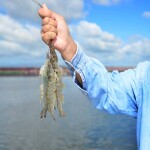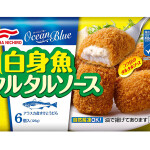Members of New Zealand’s seafood sector spoke of big happenings ahead in sustainability as well as the ever-expanding prominence of the country’s deepwater hoki fisheries this past week at the China Fisheries & Seafood Expo in Qingdao, China.
New Zealand’s hoki fisheries were among the first of the whitefish variety to be certified sustainable by the Marine Stewardship Council, according to the non-profit firm Deepwater Group Ltd. Representatives for the non-profit noted that sustainability labels have served to set hoki apart in consumer and buyer eyes – both in China and around the world – even though such labels are rapidly becoming a necessity for most fish and shellfish industry-wide.
Popular NZ supplier and aquaculture company Sanford, which also hosted a booth at the expo, confirmed that the schooling fish – which are best caught during peak season in NZ between June and September – are “an extremely important commercial trawling catch,” partly because of the species’ sustainability status.
“With 96 percent of our territory under water, sustainability is central to everything we do,” reads the Sanford mission. The company’s chief executive Volker Kuntzsch confirmed that “There’s a lot happening on the sustainability front in New Zealand,” referring specifically to the further development of the Precision Seafood Harvesting (PSH) method as one example of such strides.
Characterized by its developers as “a new, sustainable fishing technology tipped to revolutionize the global industry,” PSH has already won two KiwiNet Research Commercialization Awards. The program also took home the Supreme Award and the Innovation in Sustainability & Clean-Tech Award during the 2014 New Zealand Innovator Awards.
The PSH program has carried on for over six years, with companies including Sanford, Sealord and Aotearoa Fisheries investing NZD 26 million (USD 17 million; EUR 15 million) in the method under a Primary Growth Partnership with the Ministry for Primary Industries. This investment will be matched by the ministry.
The first set of results relayed in April 2015 showed elevated survival rates and prompted Greg Johansson, COO at Sanford, to conclude that PSH “changes the way fish can be brought to market.”
“We can offer more great quality fish to consumers and there are new opportunities for higher end product. It all increases the value of the products we can offer and in turn, the value of the industry. The story of how the fish is caught is increasingly important for consumers and this new method is a great New Zealand story, that will potentially change the way the world fishes,” said Johansson in a prepared statement.
[Brush up on the basics of PSH here: http://www.precisionseafoodharvesting.co.nz/]
In other sustainability news for the company, Sanford most recently offered to abstain from commercial fishing in the Hauraki Gulf if fishers vow to record and report their catch. “Complete transparency and data on all fishing in the Gulf is an important future step to preserving the fish stocks for future generations,” said Kuntzsch, as reported by Business Day, during the Hauraki Gulf Forum's annual meeting at the outset of November.
"The issue we have is that around half or more of what's taken out of the Gulf is currently unreported, meaning we have a massive hole in the information available on the health and size of the fish stocks," Kuntzsch added.
All commercial vessels report every snapper they catch, including those thrown back. Apps like Fish4All have facilitated a good start, according to Kuntzsch, but there is more fine-tuning of the system needed before the Ministry for Primary Industries gets it right.






